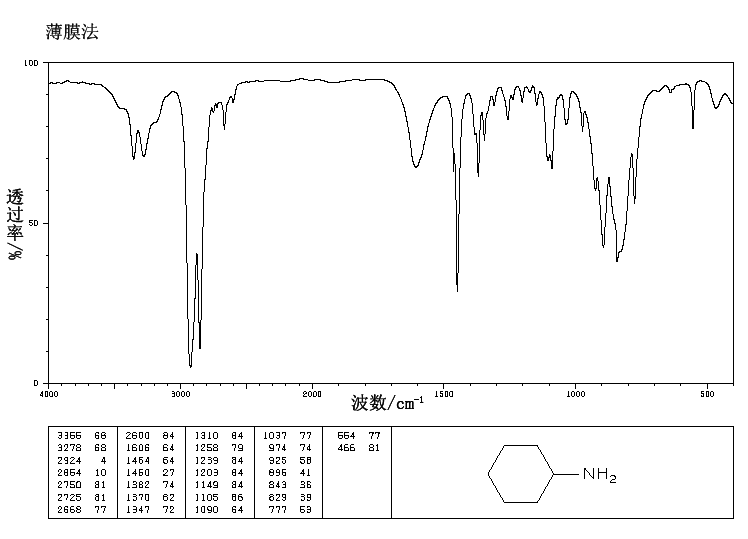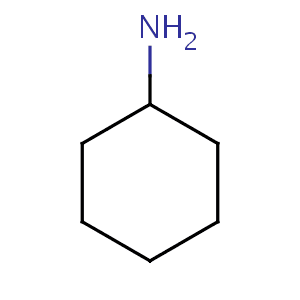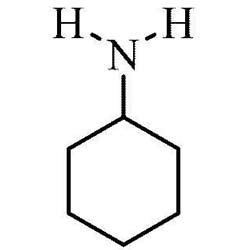Formula C6H13N Density 865 kg/m³ | Boiling point 134 °C | |
 | ||
Appearance clear to yellowish liquid | ||
Cyclohexylamine is an organic compound, belonging to the aliphatic amine class. It is a colorless liquid, although like many amines, samples are often colored due to contaminants. It has a fishy odor and is miscible with water. Like other amines, it is a weak base, compared to strong bases such as NaOH, but it is a stronger base than its aromatic analog, aniline.
Contents

It is a useful intermediate in the production of many other organic compounds. It is a metabolite of cyclamate.

Preparation
Cyclohexylamine is produced by two routes, the main one being hydrogenation of aniline using cobalt or nickel catalysts:
C6H5NH2 + 3 H2 → C6H11NH2It is also prepared by alkylation of ammonia using cyclohexanol.
Applications

Cyclohexylamine is used as an intermediate in synthesis of other organic compounds. It is the precursor to sulfenamide-based reagents used as accelerators for vulcanization. It is a building block for pharmaceuticals (e.g., mucolytics, analgesics, and bronchodilators). The amine itself is an effective corrosion inhibitor. Some sweeteners are derived from this amine, notably cyclamate. The herbicide hexazinone is derived from cyclohexylamine.
Toxicity
LD50 (rat; p.o.) = 0.71 ml/kg
Safety

It is flammable, with flash point at 28.6 °C. It is toxic by both ingestion and inhalation; the inhalation itself may be fatal. It readily absorbs through skin, which it irritates. It is corrosive. Cyclohexylamine is listed as an extremely hazardous substance as defined by Section 302 of the U.S. Emergency Planning and Community Right-to-Know Act. It has been used as a flushing aid in the printing ink industry.
In regards to occupational exposures, the National Institute for Occupational Safety and Health has suggested workers not be exposed to a recommended exposure limit of over 10 ppm (40 mg/m3) over an eight-hour workshift.
